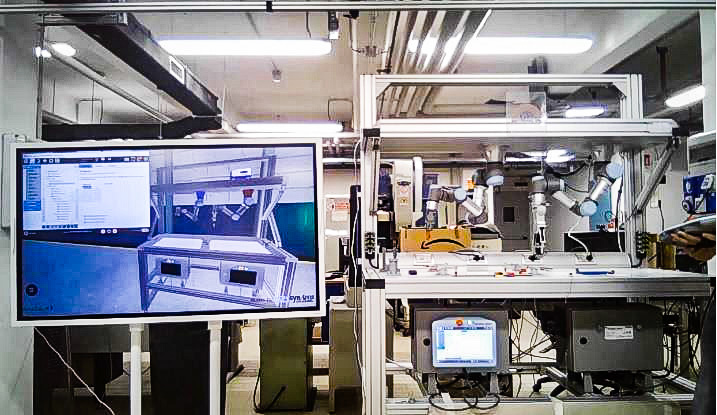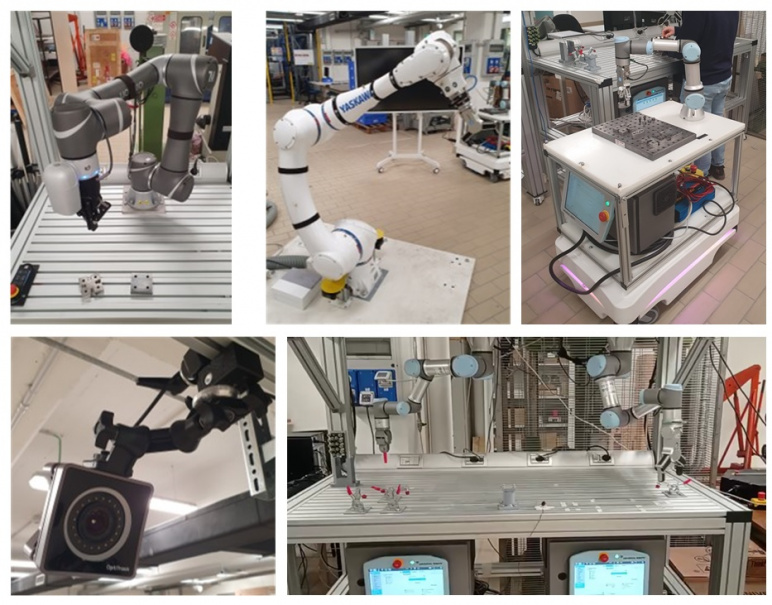Interactive programming of collaborative robots in assembly applications

The aim of the research group's activities is the full exploitation of innovative collaborative robots in industries, mostly SMEs, where production is not organized through assembly lines and where batches of products are small. In order to support SMEs it is necessary to facilitate the planning phase and to accelerate the planning of the process to make it suitable even for low production volumes.
The research focuses on a new programming methodology, based on the generation of the robot operating program for the entire work cycle through a high level interaction with the human co-worker. The methodology is based on two aspects: natural input methods and immediate feedback. A large number of different and complementary sensors (RFID, IR optical tracing, visible cameras, accelerometers, gyroscopes, gesture recognition systems, dynamometers) are coordinated to provide a natural user experience. Virtual and / or augmented reality provides feedback to the worker directly in the context of the work area.
The objectives of the laboratory are:
- to study the applicability of a robotic collaborator in typical industrial uses
- identify the operations in which the use of the robotic collaborator can be useful
- formalize the exchange of information with the robotic collaborator
- Create a programmable robot contributor from inexperienced users,
- to build a user friendly interface for collaborative work that is
- fail-safe (poka-yoke)
- competitive with manual operation (faster and easier)
- extendable to different technological operations
- reliable (promotes trust in the robot)
In summary, in the laboratory the human worker instructs the robot using 'training by demonstration' and the system provides immediate interactive feedback of the robot's intentions through augmented reality. Fore further information see our youtube channel.


